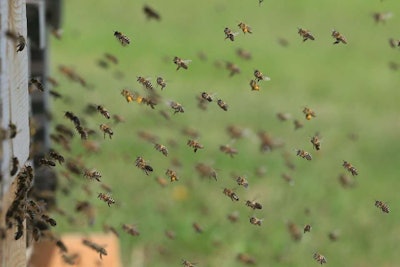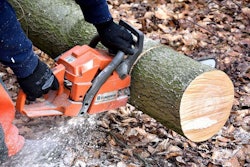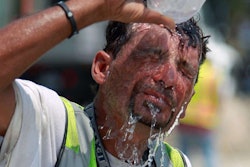 Photo: Pixabay
Photo: PixabayA landscaper died and several other people were injured after a swarm of bees attacked them yesterday outside a house in Tucson, Arizona.
One of the landscapers, an unidentified male at this time, was already being swarmed when he approached his coworker, who was spraying for weeds and bugs.
According to Drexel Heights Fire District spokeswoman Tracy Koslowski, the landscaper who was spraying tried to help his coworker but the bees were too much and he fled for his life.
Firefighters strived to rescue the landscaper and two ended up being stung as well according to a news release, but he ended up dying after the firefighters were able to move him inside the house.
The house’s resident was also severely stung and was treated at the hospital for 100 to 200 stings to his upper body and head, according to Tucson News Now.
The second landscaper was stung as well, but he refused treatment.
Desert Swarm Bee Removal arrived at the scene and found the honeycomb hanging visibly from the roof. Company owner Greg Williams says an open hive is particularly dangerous. “Rather than having to funnel out through a small hole in an enclosed space, they’re able to literally jump at you,” he told Tucson News Now.
Bees tend to be more aggressive in the late summer and early fall and there are a number of reasons why the bees tend to be extra defensive during this time period, including heat and humidity, nectar death and hive robbing.
To prevent bee stings, check a jobsite for signs of an active nest. Take care when using tools such as lawnmowers, weed eaters and chainsaws as these can all provoke the bees into swarming.
Wear light colored clothing that covers as much skin as possible (there’s a reason beekeeper suits are white). Avoid wearing fragrant products while at work. Banana scents are especially attractive to bees.
If a swarm begins to chase you, run in a straight line away from the bees and seek shelter indoors. Do not swat at the bees as this will only anger them more. Cover your face as you flee. Bees target the head and eyes.
Do NOT jump in a body of water. Bees will wait until you have to surface for air.
If you do end up getting stung by honeybees, remove the sting as muscles in the stinger allow it to continue to pump venom into the victim event if it is no longer connected to the bee.
To remove the stinger, scrape it out with a fingernail, dull knife blade or other straight edged object. Avoid using your fingers or tweezers as this will squeeze out more venom. It is very important to not to panic and remember that only five percent of the population is allergic or hypersensitive to bee or wasp stings.
A normal reaction to a bee sting includes pain, swelling, redness and itching. Icing the stings, applying anti-itch cream and taking an antihistamine pill can all help alleviate the pain.
If someone is having an allergic reaction to a bee sting, symptoms include a rash, stomach cramps, nausea, vomiting or diarrhea, dizziness, swelling in areas where the sting did not occur, including the throat, neck or tongue, shortness of breath, shock and unconsciousness.
Seek medical assistance immediately if you or a coworker experience any of these symptoms.











